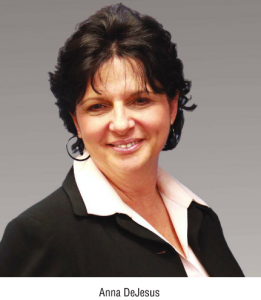As Seen in CFO Studio Magazine Q1 2017 Issue
 Anna DeJesus, the Chief Financial Officer for the Family & Children’s Service of Monmouth County, joined Family & Children’s Service in 2011. FCS is the oldest not-for-profit service agency in Monmouth County, caring for 18,000 underserved individuals and families annually, from children to seniors. Andrew Zezas, Publisher of CFO Studio magazine and host of CFO Studio On-Camera, spoke with Ms. DeJesus about the role of the CFO in the tax-exempt sector.
Anna DeJesus, the Chief Financial Officer for the Family & Children’s Service of Monmouth County, joined Family & Children’s Service in 2011. FCS is the oldest not-for-profit service agency in Monmouth County, caring for 18,000 underserved individuals and families annually, from children to seniors. Andrew Zezas, Publisher of CFO Studio magazine and host of CFO Studio On-Camera, spoke with Ms. DeJesus about the role of the CFO in the tax-exempt sector.
(ANDREW ZEZAS) Your organization services the whole gamut, from young children to seniors. What is the most unique feature of FCS and its mission?
DEJESUS: Without us, our clients would have nowhere else to turn. It’s extremely unique because there aren’t any other agencies in Monmouth County that provide some of the services that we do. We have a “Rep Payee” program in which we manage Social Security monies for clients who may not be able to handle their own budgets. Going on right now is Operation Sleighbells. It’s a great program. It provides toys, clothing, and even gift cards for the parents of children in the Christmas season. Other programs are KIDS Corps, offering opportunities for teenagers to volunteer; and Reading Buddies, where seniors go into slightly underprivileged schools and read to children to spread literacy.
How do you think the role of CFO differs in the not-for-profit world vs. the for-profit?
DEJESUS: It is similar on the level of reporting finances, as my role is to be sure that the agency is fiscally sound. Management of revenue and expenses— that’s all very similar to what a CFO does in a for-profit.
But you’re not just a rear-view compliance officer.
DEJESUS: No, I am not. My goal is to keep this agency fiscally sound so that we can continue to serve our clients. I don’t have to worry about the bottom line, so to speak; or making sure that our stockholders get a dividend at the end of the year. I have to be sure that this agency stays in a position where we can continue to operate.
What are the most important steps that a CFO can take to have the greatest positive influence within their tax-exempt organization?
DEJESUS: When I first came into the agency, there were no reports. A lot of our departmental managers and directors are nurses and social workers—not businesspeople. So, it’s important to me, to explain to them how their departments are doing, but also how to keep everyone solvent.
Would you characterize your management style as aggressive? tough? You explain it.
DEJESUS: I think it’s a combination of a lot of things. I try to be fair and honest. I can be direct. I like to get to the point, especially with finances. What I strive to do is show a path.
